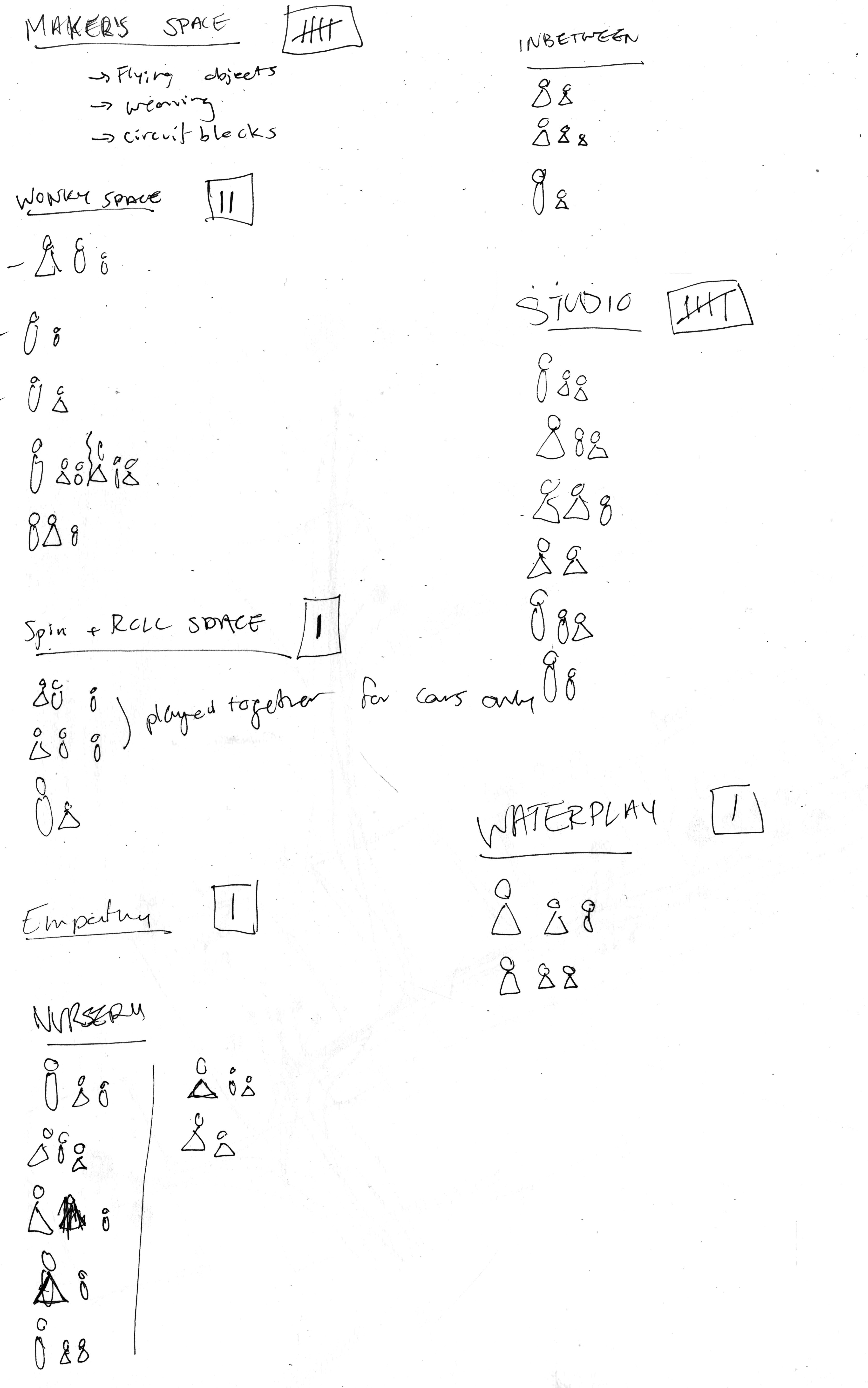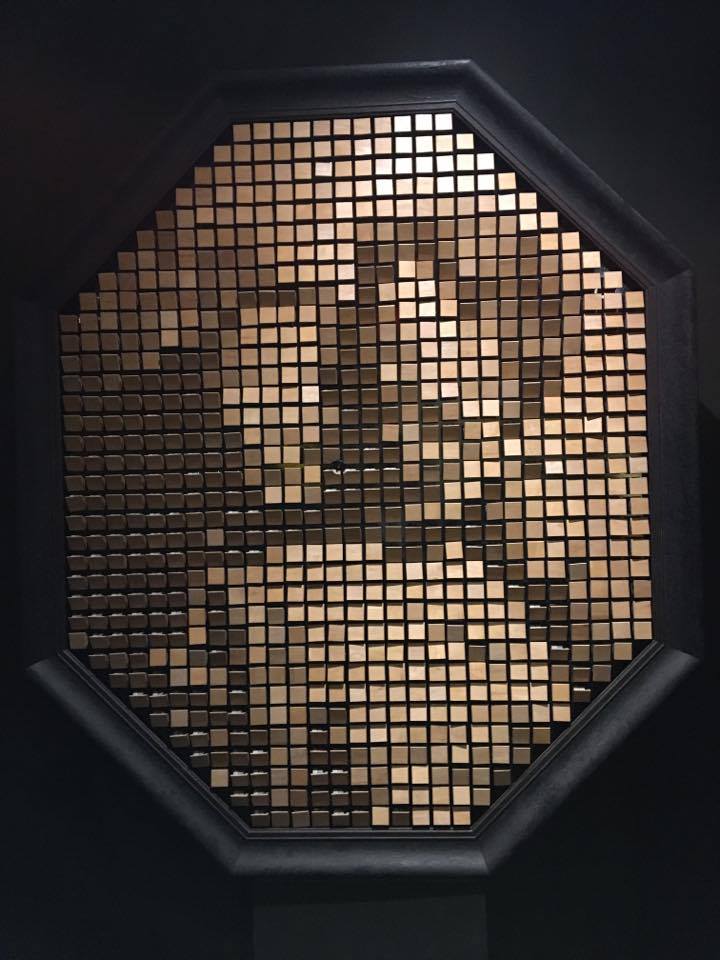General Observations of the Museum

This is a tally of how many people were at which exhibits during the times 10:30 am – 11 am. The tick marks show how many people that work at the museum are there. The Makerspace and Studio had the most staff because it is where people most needed help to use the equipment/exhibit.

This is a diagram showing how people moved around the museum. Each color represents a family (9 total), and the dots represents where they stopped. The dot’s size shows how long they stayed there.
As observed, most people spent the most time in the Garage. People who went to Water Play, usually just stayed there for a while, without visiting the rest of the museum. My conclusion is the reason people stayed at the garage the longest is because it had more interact exhibits for all ages. For example, the Empathy Exhibit only had 3 of the families I observed, because it is targeted for children ages 3-5 exclusively.
Exhibit Close Analysis

Wooden Mirror
2013
Daniel Rozin
“This piece explores the line between digital and physical, using a warm and natural material such as wood to portray the abstract notion of digital pixels.”
I thought this installation has the most resemblance to what we are learning in this class. Last time I visited the museum, this installation is what sparked my interest in Physical Computing and what lead me into taking this class. So, I thought it would be interesting to observe how people interact with it.
Basically, the installation has a camera that observes people and based on the image, it rotates wooden pieces to mirror what is happen in the camera.
Interactions:
- 0-2: stared at it/usually did not interact. Some smiled.
- 3-5: realized that the exhibit is moving because of them, but seem to not know that it is them that is being projected.
- 6-12: played with the exhibit and understood it’s concept. Bragged to their guardian’s about it. Felt a sense of empowerment for making it react to them.
- teens: interacted with it and thought it was cool. Felt a sense of empowerment for making it react to them.
- young adults: interacted with it and thought it was cool. Got their friends into it, too.
- adults/parents: interacted with it and thought it was cool. Spent most of the time picking up their kids (0-5) so they can see it too.
+
The installation is really simple (conceptually), which made it easy for people to understand it. At the same time it had that “magic” factor (i.e. the wires and background processing were hidden).
It was easy to interact with for most ages. The easy thing about the installation that it interacts with any and all people and things and doesn’t require much motor skills.
–
The camera was positioned a bit high, so shorter/younger kids weren’t caught by the camera, therefore their parent’s either picked them up or they gave up and left.
The installation was in a nook in the wall, which made it easy for a lot of people to walk past it without even noticing it. It only work if people approach it and are in the camera’s range.
Leave a Reply
You must be logged in to post a comment.